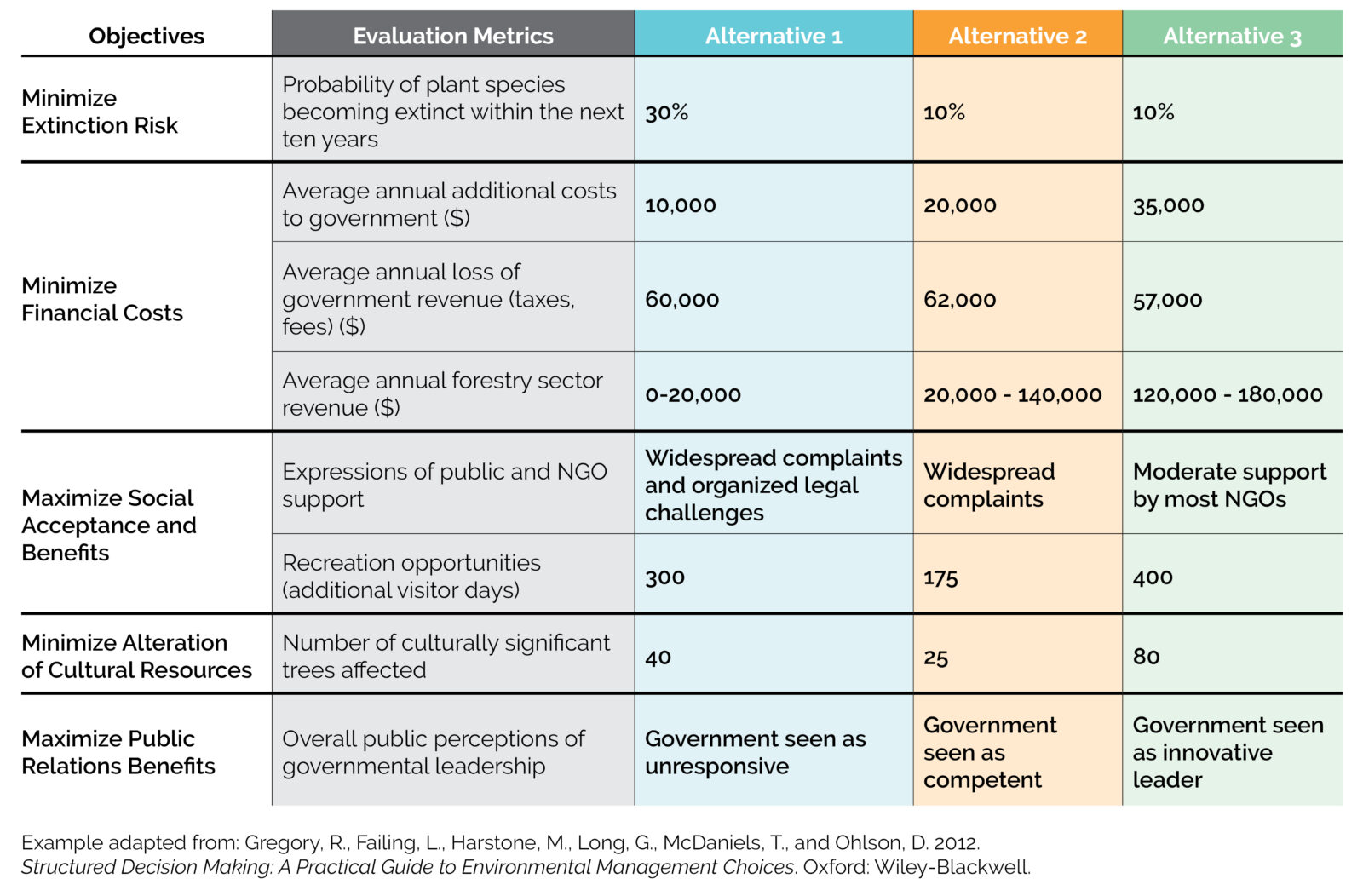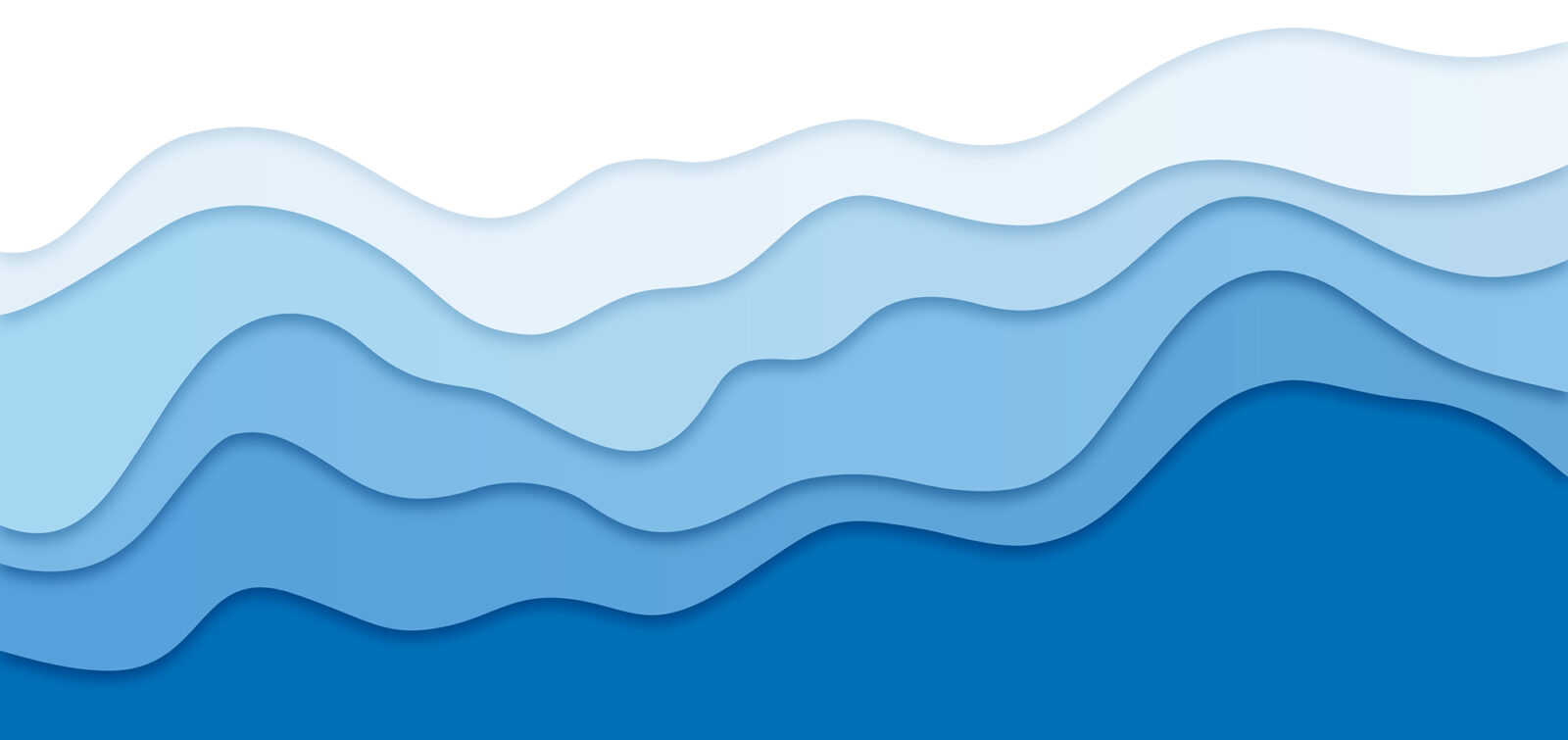Environmental management decisions can be notoriously complex, involving multiple variables and fields of science, as well as the diverse values and priorities of stakeholders and affected communities. Key decisions generally involve consideration not only of the scientific facts of a given situation, but also questions of how much those facts matter, and to whom. This is true at multiple scales, ranging from large-scale plans and policies to individual projects to site-scale management decisions.
Structured Decision Making (SDM) is a technique for thinking systematically about such decisions.
Increasingly popular among resource management agencies and other clients, SDM enables groups of people to organize their collective thinking and decisions in a rigorous and transparent manner that is accessible to all and inclusive of all perspectives.
The process involves six steps:
This general logical progression is certainly not unique to SDM, but the simplicity of this framework is an important asset in keeping participants oriented to the overall process as they move through the steps.
Steps 1 & 2: Clarify and Define
The first two steps involve specifying precisely what decision needs to be made, what objectives (i.e., outcomes) are being sought by the decision, and how progress toward those ends should be assessed. Careful consideration and specification of these items is crucial because they form the yardstick against which the performance of alternatives is ultimately evaluated. These steps prompt all participants in the process to articulate the objectives that are important to them and to make progress toward them actionable through the selection of appropriate assessment measures. There are also important practical implications to these specifications – for example, some measurement techniques require complex modeling, while others may only require straightforward collection of information.
An important feature of SDM is that, unlike multi-criteria decision analysis and other formalized decision techniques, it does not require all measures to be quantitative. SDM recognizes that many objectives in environmental management situations involve qualitative assessments, such as public acceptance – or even philosophical matters, like the spiritual values of tribal peoples – and that these considerations are no less legitimate than objectives that are readily measurable. Robust decisions are those that optimize across all relevant objectives, regardless of how progress toward those objectives is best assessed.
Step 3: Develop Alternatives
Only after the decision, objectives, and measures are specified does the SDM process seek to identify alternatives and then evaluate the performance of each alternative according to the identified measures. The evaluations may involve substantial research, potentially including modeling, field data collection, literature reviews, cost estimates, and other activities.
Step 4: Estimate Consequences
Ultimately, the findings of each of these evaluations are expressed in a consequence table, which is a concise summation of how the alternatives perform according to the measures.

Step 5: Evaluate Trade-Offs and Select Alternatives
The consequence table is not the end of the process, however, because ultimately the overall evaluation of alternatives depends upon the relative importance of the objectives to one another. It is rarely, if ever, the case that all the objectives in question are equally important, yet that is what is often implicitly assumed in many non-SDM decision environments. Participants in an SDM are asked to assign weights to all objectives, which can then be used either individually (to identify a given participant’s evaluation of the alternatives) or collectively (by averaging weighted scores across the group).
Step 6: Implement, Monitor, and Review
If a decision is then implemented, SDM can proceed to step 6, which involves monitoring, review, and, if necessary, revisitation of any aspect of the SDM process.
SDM in Action
ESA has been establishing a team of trained SDM specialists to partner with clients and guide them through the SDM process. We are leading this process for our clients at the California Department of Water Resources (DWR) as part of their compliance with the Incidental Take Permit (ITP) for the Long-Term Operations of the State Water Project. The ITP contains a Condition of Approval that requires DWR to evaluate the benefits to out-migrating juvenile salmonids of the potential installation of migratory fish guidance structures at the head of Sutter Slough and Steamboat Slough in the northern end of the Sacramento–San Joaquin Delta. The purpose of the structures would be to divert juvenile salmonids out of the mainstem of the Sacramento River into the sloughs, where their prospects for surviving the out-migration through the Delta may be better.
The participants in this SDM are a working group of representatives from key state and federal agencies concerned with fish survival in the Delta. Under ESA’s facilitation guidance, the working group has identified decision objectives and measures related to survival of target fish species, costs, potential effects on other fish, and potential negative side effects of the installation of migratory fish guidance structures. The working group developed six alternatives for potential migratory fish guidance structure installations, involving technologies such as bio-acoustic fish fences, floating fish-guidance structures, and rock groins, intended to divert migrating juvenile salmonids into the slough entrance. Methods for estimating the potential consequences of these alternatives include hydrodynamic modeling, fish behavior modeling, cost estimation, and literature reviews on potential negative effects of guidance structure installation, ranging from the potential for increases in predation on juvenile salmonids to navigation impedances. The final report on this SDM process is scheduled to be completed by March 2023.
As SDM continues to become more widespread, ESA will continue to expand our services in design and facilitation of these key decision processes. For more information on how SDM can benefit your next project, please reach out to Bill Eisenstein.







